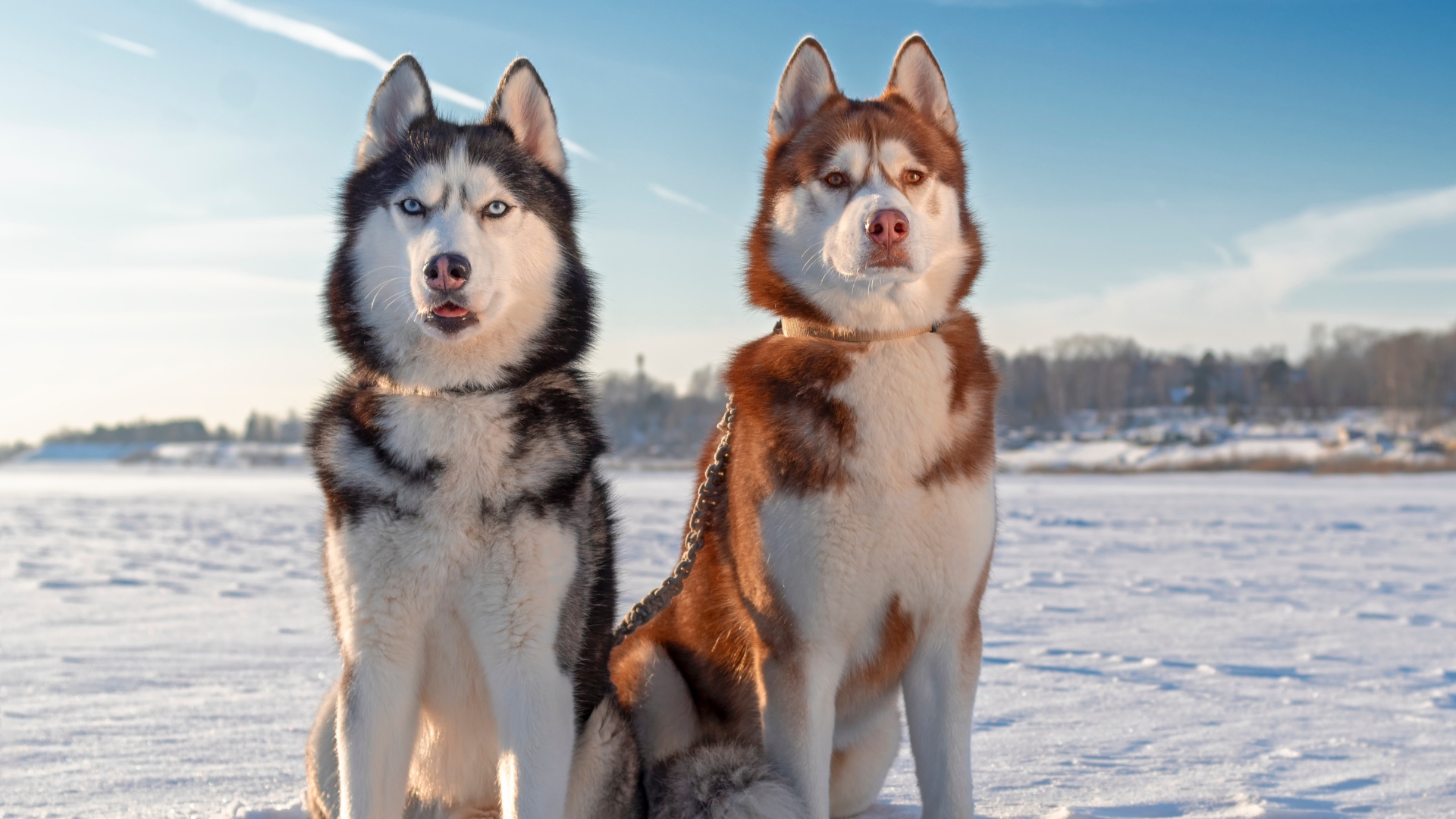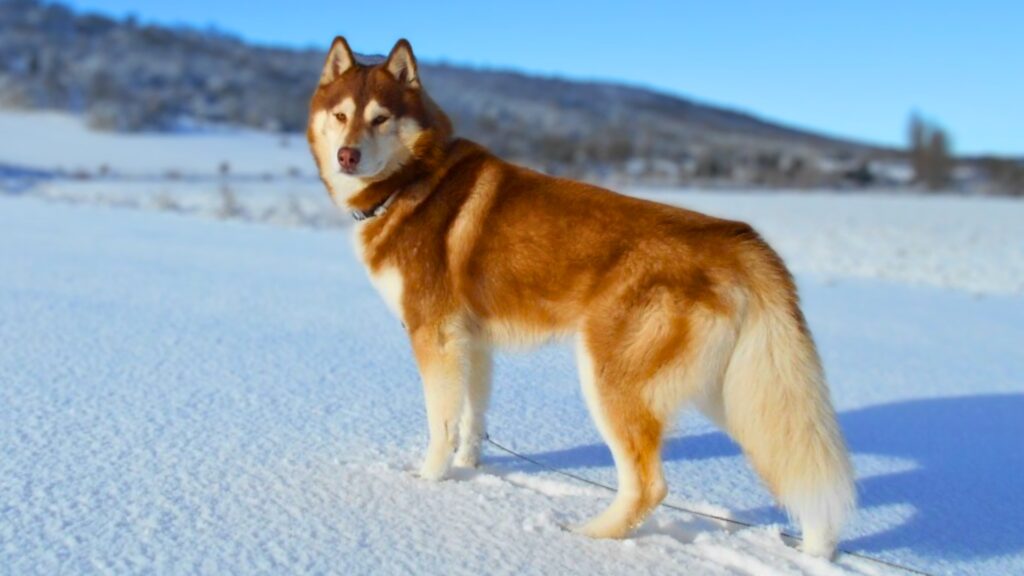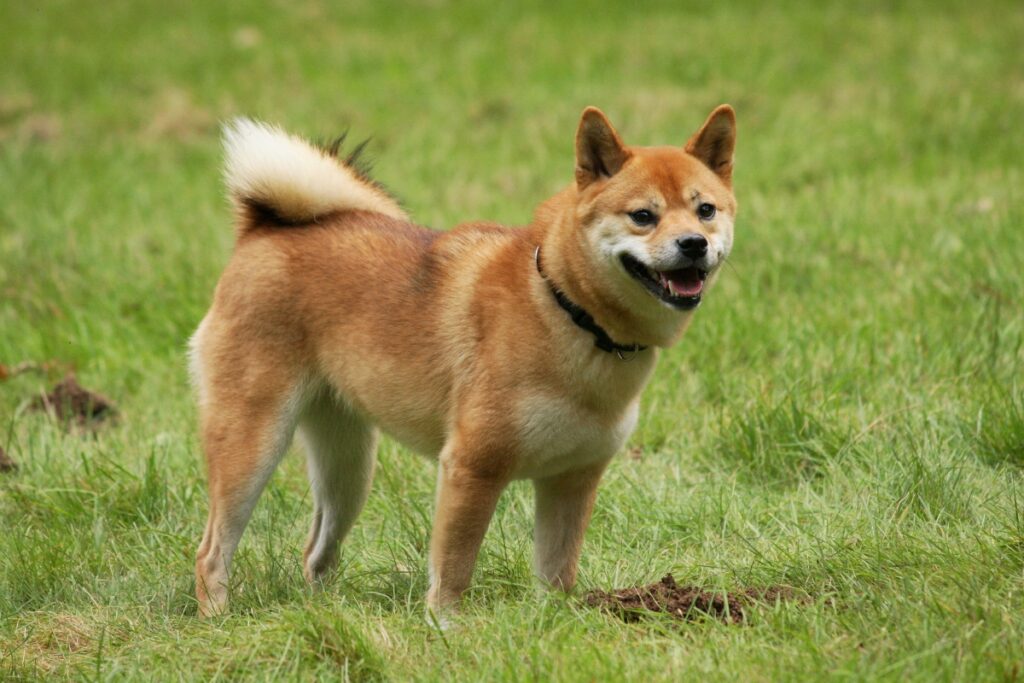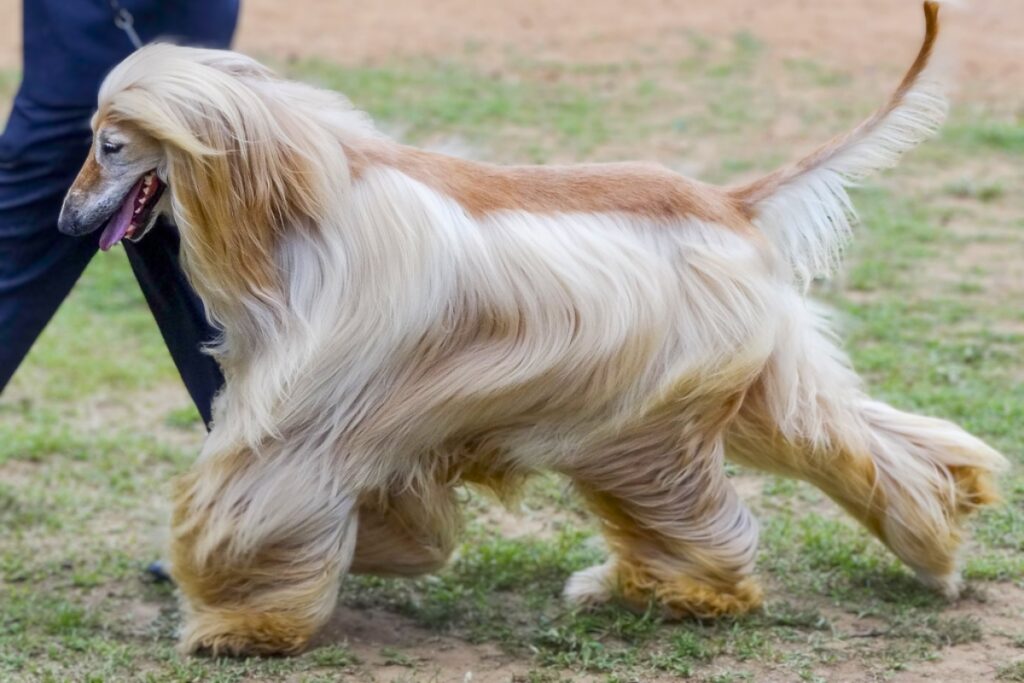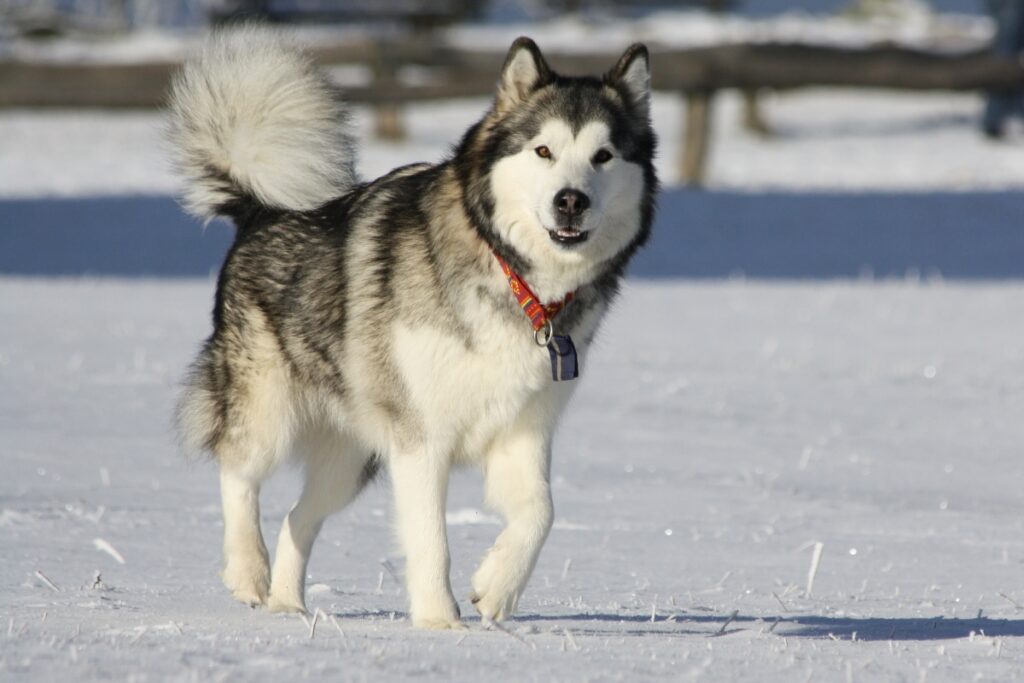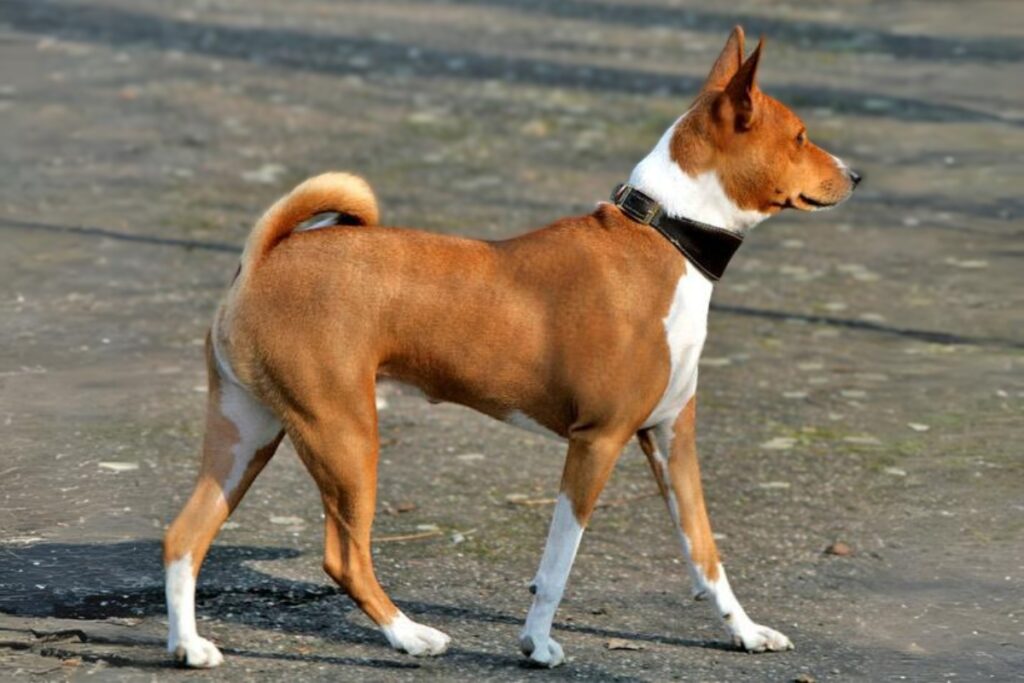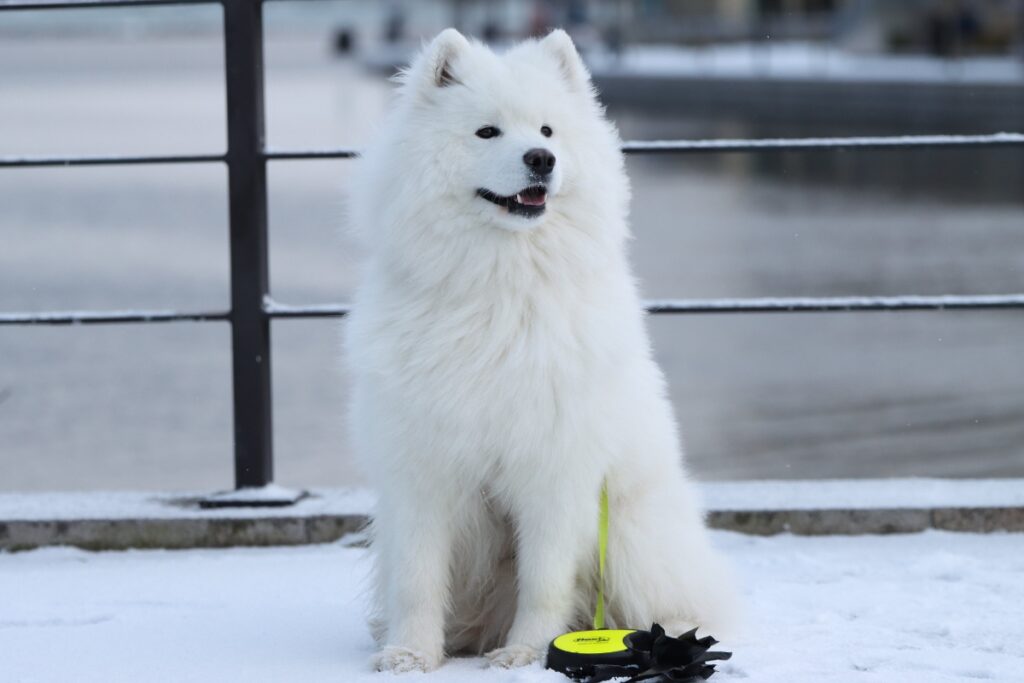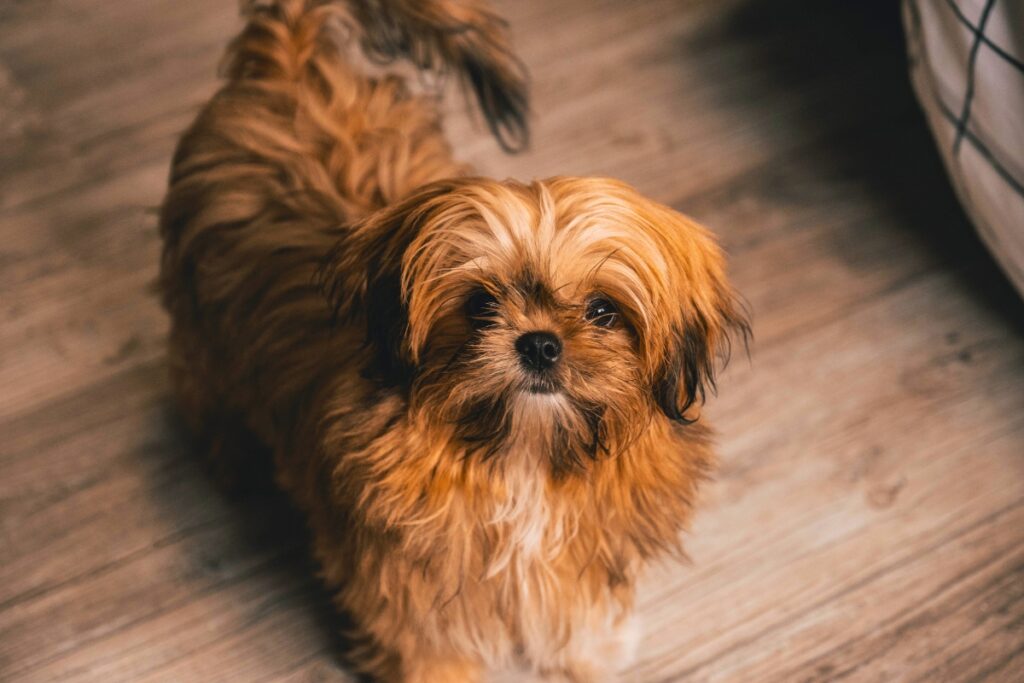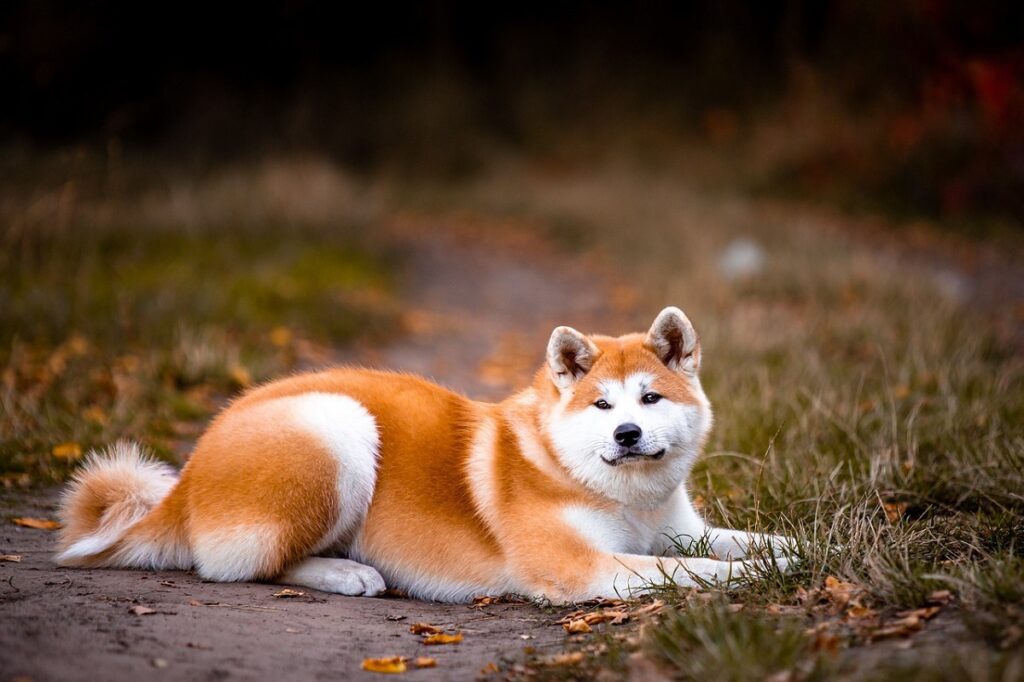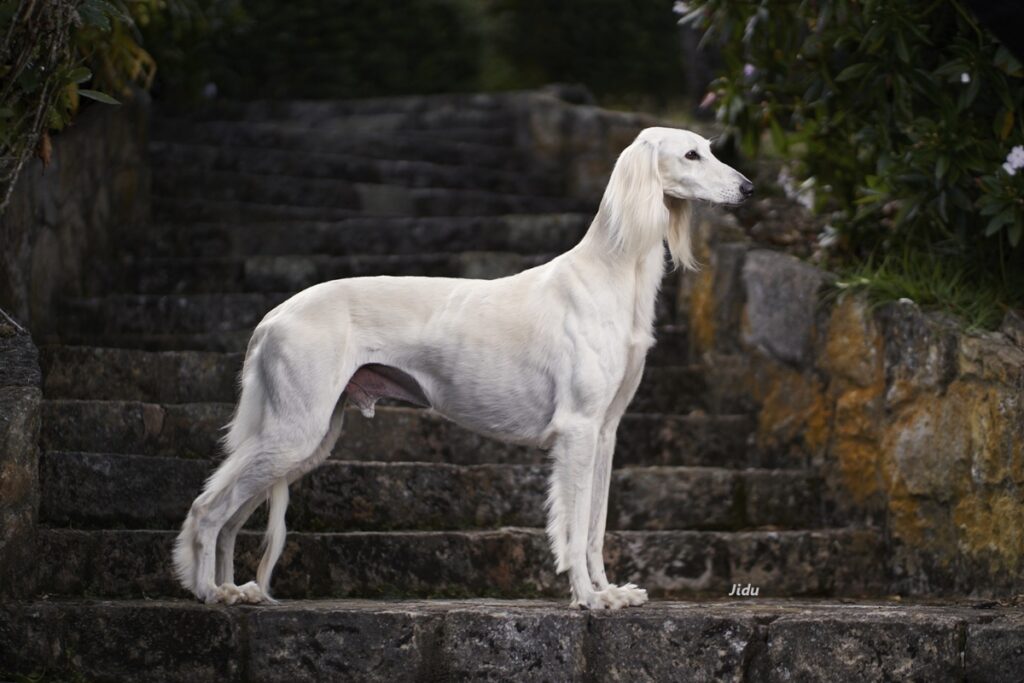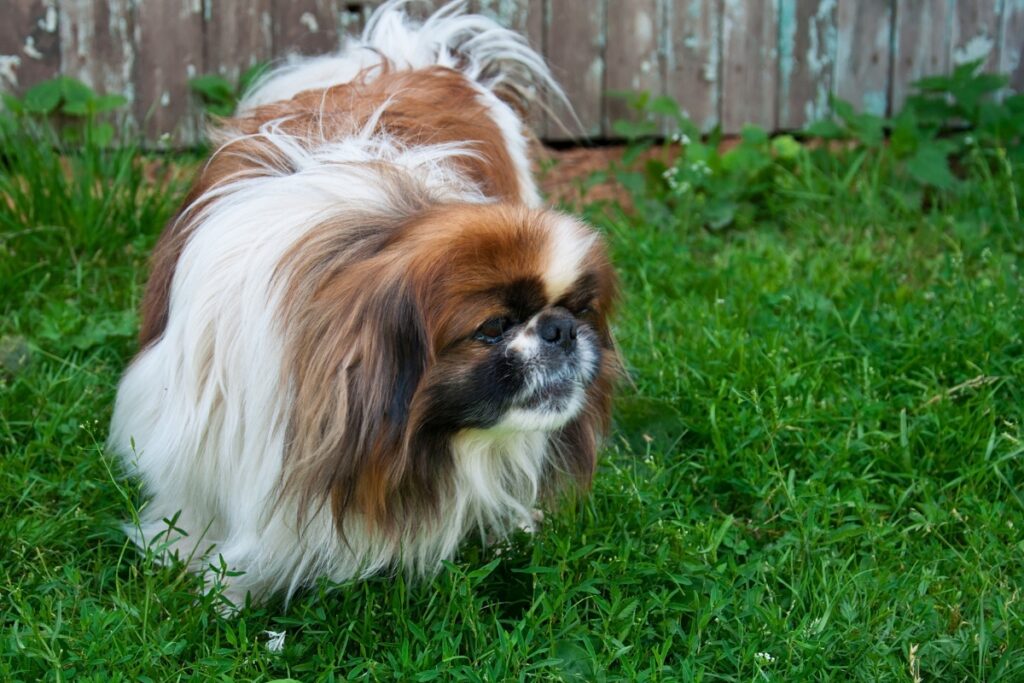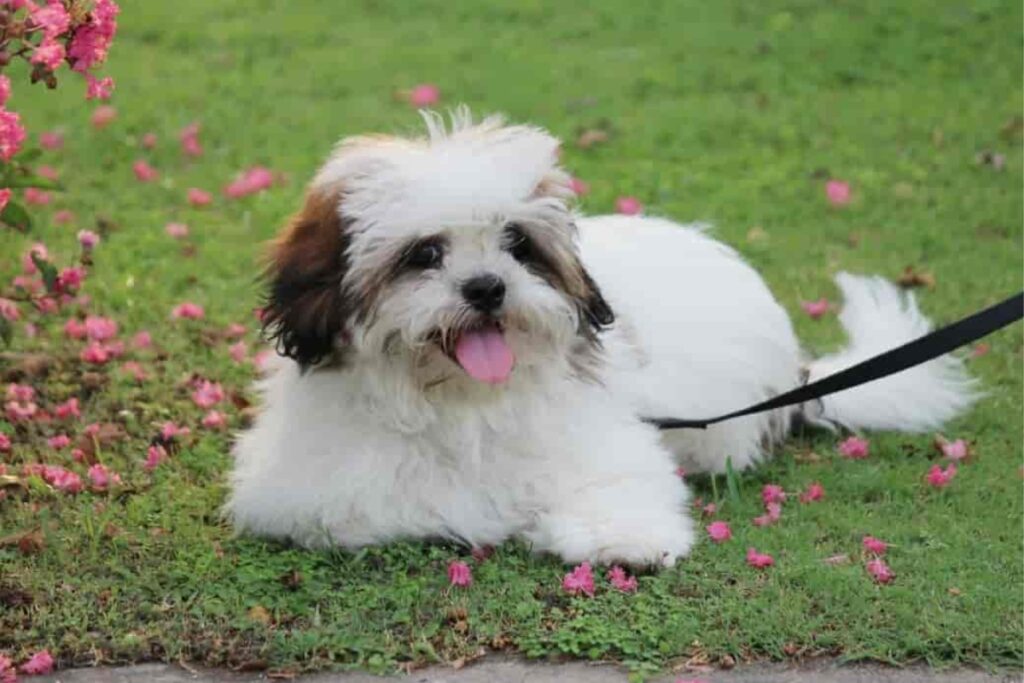Ever wonder which of our furry companions retain the strongest ties to their wild wolf ancestors? While all dogs descend from wolves, some breeds boast a closer genetic relationship than others. This exploration delves into 11 dog breeds whose DNA whispers tales of their lupine heritage. From ancient, primitive breeds to more modern varieties, we’ll uncover the fascinating genetic links that connect these domesticated canines to their untamed cousins, revealing surprising similarities in appearance, behavior, and instincts. Prepare to be amazed by the enduring legacy of the wolf within man’s best friend.
It’s widely believed that all of today’s dogs are descendants of wolves, though there’s always been much speculation surrounding whether dog domestication happened more than once. Of course, it’s very easy to see that some dogs resemble wolves more closely than others. They have certain physical attributes that display their close genetic relationship — thick fur and narrower snouts — and some even howl!
Modern dog breeds are mostly domesticated, yet wolves have remained wild and want nothing to do with humans. Dogs have, for the most part, however, retained that pack mentality. More often than not, with the exception of certain breeds, they enjoy playing and cozying up to other dogs.
What adds to the suspense is that those dog breeds that are closest to wolves may not even look like their DNA counterparts — think the Shih Tzu, Pekingese, and Saluki, for starters, yet the DNA tells the real story.
Dogs Closest to Wolves
There are a number of dogs that share more DNA than others and have a very close relationship that beats out other dog breeds. Let’s take a look at a few of those closely related to wolves.
1. Siberian Husky
The Siberian Husky dog is likely one of the top dogs people think of when it comes to wolves genetically. After all, its physical appearance bears a striking resemblance to the wild animal. The thick double coats and upright, pointed ears are just the physical traits Siberian Huskies share with wolves, their wild ancestors. They act like them, too, with a high prey drive and a penchant for howling.
The Siberian Husky has been around for thousands of years but made its way to Alaska in the early 1900s to serve as a sled dog from the Chukchi people. The coat on a Siberian Husky allows it to weather frigid temperatures, and they are very powerful dogs despite being medium-sized in stature.
Want to learn more about the breed category the Siberian Husky falls into? Check out the different types of Huskies and compare an Alaskan Husky vs Siberian Husky!
| HEIGHT | 20″ to 23.5″ |
| WEIGHT | 25 to 60 pounds |
| ORIGIN | Siberia |
2. Shiba Inu
Did you know that the Shiba Inu dog, a Japanese breed, nearly died out by the time World War II came to an end? We’re glad they didn’t because Shiba Inu is a lot of fun to have around.
The Shiba Inu is a very energetic breed with an independent streak a mile wide. Shiba Inus are closely related to wolves and are said to have upwards of 5.5% of shared DNA with Japanese wolves, though they don’t resemble wolves and tend to look more like fluffy foxes.
Looking deeper into its heritage, the Shiba Inu comes from Japan and is an ancient breed that’s been around for a really long time. They were once revered as hunters in Japan’s highlands, but they are now companion dogs above all else, especially in Japan, although the breed has gained popularity in the US.
| HEIGHT | 13.5″ to 16.5″ |
| WEIGHT | 17 to 23 pounds |
| ORIGIN | Japan |
3. Afghan Hound
One of the hound dog breeds, the Afghan Hound, hails from Afghanistan, and believe it or not, it’s DNA is closely related to wolves genetically. Sure, it doesn’t look or act like one, but the genetics don’t lie.
The Afghan Hound actually has a regal look to it and is one of the oldest purebred breeds in the world. Afghan Hounds are sighthounds, a category of dogs that use their sight to hunt down prey.
At home, the Afghan Hound temperament is a bit of a dichotomy. Afghan Hounds can be aloof but playful and independent but affectionate. The Afghan Hound also has very long fur that requires quite a bit of grooming to keep it from knotting and matting, so if you want to adopt one of these pups, I would suggest having a good amount of time on your hands.
| HEIGHT | 25″ to 27″ |
| WEIGHT | 50 to 60 pounds |
| ORIGIN | Afghanistan |
4. Alaskan Malamute
The Alaskan Malamute is one of those dogs that’s so closely related to wolves genetically that it is actually sometimes mistaken for one. The Alaskan Malamute is one of the types of Alaskan dog breeds and is closely related genetically to the huskies, though they resemble wolves.
Alaskan Malamutes also relate to wolves in that they are pack animals — they regularly man sleds together and congregate with their canine pals. One area where the Alaskan Malamute differs is its personality — it’s a friendly pup that loves to play and enjoys being with its humans all around.
The Alaskan Malamute is thought to have been around for thousands of years, descending from domesticated wolf dogs with a tribe called the Malamutes. In terms of it being a sledding dog, the Alaskan Malamute is more of a freighter — it excels in carrying high-weight loads — than a racer, which it leaves to the Siberian Husky and others.
| HEIGHT | 23″ to 25″ |
| WEIGHT | 75 to 85 pounds |
| ORIGIN | Siberia |
5. Basenji
One look at the Basenji and there’s no way you would think it’s closely related to wolves, but surprise! This cat-like, barkless dog is, in fact, in possession of a significant amount of DNA related to its wolf ancestors. For a while, it was a semi-feral dog, but it is considered to be one of the first dogs to be domesticated.
The Basenji has been around for quite a while, making it one of the oldest dog breeds, though it only made its way to the US in the early 1900s. Prior to that, it was a staple in Africa, where it was a successful hunting dog.
These pups are very active and need owners who are active, too. They also make the cutest yodeling or chortling sound in the absence of bark, thanks to their uniquely shaped larynx.
| HEIGHT | 16″ to 17″ |
| WEIGHT | 22 to 24 pounds |
| ORIGIN | Africa, the Democratic Republic of the Congo |
6. Samoyed
The Samoyed is one of the sled dog breeds, meaning it’s a powerful dog with a strong work ethic. It’s also a stunner with its fully-white fur and wolf-like appearance. There is no doubt that this dog is closely related to wolves genetically. It hails from Siberia, where it was developed by the Samoyedic people, who needed a dog that could carry out hard labor.
This is one of the dog breeds built for the cold. Its fur is weather-resistant, and even its trademark smile, which makes it look perpetually happy, is designed to eliminate drooling and the formation of icicles. The Samoyed’s original claim to fame was hunting reindeer, though it also excels at herding.
Fun fact: during really cold nights, Samoyeds laid on their owners to keep them warm.
| HEIGHT | 19″ to 23.5″ |
| WEIGHT | 35 to 65 pounds |
| ORIGIN | Russia, Siberia |
7. Shih Tzu
Developed in Tibet, the Shih Tzu belongs to the category of the oldest dog breeds, with a heritage that dates back thousands of years to ancient China. And guess what? It’s one of the dogs closest to its wolf ancestors.
Appearances aside, because there is a major difference there, there are behavioral similarities between the Shih Tzu and the wolf, showing that they’re closely related, such as being quite fond of and devoted to their pack members. For the Shih Tzu, instead of other wolves, its pack members are other dogs and humans.
Shih Tzu actually translates to “little lion dog” and is believed to have been created by crossing a Lhasa Apso and Pekingese. Shih Tzus spent centuries as a royal lap dog, and until the 1930s, their existence wasn’t even known beyond the royal palace walls.
Did you know there were different types of Shih Tzu breeds?
| HEIGHT | 9″ to 10.5″ |
| WEIGHT | 9 to 16 pounds |
| ORIGIN | Tibet |
8. Akita
The Akita is another dog that you wouldn’t immediately connect to wolves genetically, but it does share similar DNA, making it closely related. Putting their looks aside, they have similar behaviors, such as being aggressive, though the situations in which they use them are often different.
The Akita is a doting family dog and is often used as a police dog. The Japanese breed also serves as guard dogs. As a pack dog, it often hunted with others in its group to take down bigger game, such as deer, the Yezo bear, and wild boar.
Like the Shiba Inu, another Japanese breed, the Akita nearly died out after World War II, at least until 1927, when a club was established by dog lovers in hopes of saving it. And save it, they did. The breed then gained popularity in the US, especially after Helen Keller brought one to the country.
| HEIGHT | 24″ to 28″ |
| WEIGHT | 70 to 130 pounds |
| ORIGIN | Japan |
9. Saluki
The Saluki closely resembles the Afghan Hound. On that note, you would never guess that it was one of the dog breeds that had wolf ancestors, but it is one of those dog breeds closest to wolves.
The Saluki, which is tied to ancient Egypt, has a tall, lean, regal stature with long hair on its curly tail. The Saluki is also one of the oldest dog breeds that is believed to date back to as early as 7000 BC.
The Saluki is a devoted pet that is trustworthy, kind, and adaptable to just about any environment you place it in. It’s also an independent dog. The Saluki is also a dog that was revered by royalty. Salukis have been found in ancient graves, having been mummified along with Pharaohs so they could join their owners in the next life.
| HEIGHT | 23″ to 28″ (Males), females are considerably smaller |
| WEIGHT | 40 to 65 pounds |
| ORIGIN | Fertile Crescent, Egypt |
10. Pekingese
How could this little lap dog be tied to wolves, you ask? The Pekingese is undoubtedly a surprise to this list, but it is one of those closest to wolves. Put the size and looks aside, the Pekingese shares a lot of DNA with its wolf ancestors.
It’s not really clear where the Pekingese originated from, though most tales point to ancient China, where it was regularly kept by Chinese royalty, members of the imperial family. From there, the English were said to have brought the Pekingese to England as a gift to the queen.
The Pekingese is a charming and affectionate dog that loves its people and will willingly serve its life as a companion dog. There are some health conditions the Pekingese is associated with, mostly because of its flat face, caused by brachycephalic syndrome.
Pekingese are also high-maintenance in that they require a lot of grooming because their fur grows quite long and is subject to knotting or matting.
| HEIGHT | 6″ to 9″ |
| WEIGHT | Up to 14 pounds |
| ORIGIN | China |
11. Lhasa Apso
The Lhasa Apso is another small breed that, when you look at it, is hard to believe is closely related to their wolf ancestors, yet it’s true. The pup is said to have bred from mountain wolves, which makes sense given its closely related DNA to its wild ancestors. Want to hear something else surprising about the Lhasa Apso? It used to serve as a watchdog in Tibetan monasteries.
Today, the Lhasa Apso makes a great household pet and companion. They are super intelligent, like Shih Tzus, and love to try their owners, having been compared many times to a wily toddler. However, they are super friendly and playful and love to spend time with their people despite their DNA being closely related to wolves.
| HEIGHT | 10″ to 11″ (Males); females are slightly smaller |
| WEIGHT | 12 to 18 pounds |
| ORIGIN | Tibet |
FAQs
What Dog Is Most Closely Related to a Wolf?
Believe it or not, it’s not one of our husky mixes that share the most with wolves genetically. It’s the Shih Tzu! If that surprises you, Huskies, Malamute, and Samoyeds are part of the Nordic spitz group that, as a whole, shares the most wolf DNA, but the Shih Tzu is the individual breed that does.
What Dog Breed Is Closest to a Coyote?
While coyotes are closer to wolves in DNA rather than dogs, there are what’s known as coydog crosses. If you’re interested to see which dog breed looks most like the coyote, that would be the Shiba Inu, though the Alaskan Malamute and Siberian Husky have striking similarities as well.
How Close Is a Husky to a Wolf?
Huskies, as a group, share the most wolf DNA and are believed to have evolved from a specific type of prehistoric wolf species that died off between 10,000 and 20,000 years ago. The Husky is considered to be about 25% wolf, making it one of the closest to wolves.
Conclusion
Did the list of dog breeds closest to wolves surprise you? How about the fact that the Shih Tzu is actually the closest related to wolves? Despite their ties, there are still some significant differences, mainly the fact that these breeds are all domesticated and do well with people — in fact, some of them happen to be the best lap dogs you could ever ask for!
Of course, there are many other modern dog breeds that also have shared wolf DNA, these are just the ones genetically closest to wolves.
While the domestic dog undeniably descends from the gray wolf, centuries of breeding have created vast genetic divergence. However, certain breeds retain a closer genetic link to their wild ancestors. Analyzing breeds like the Shiba Inu, Malamute, and Siberian Husky reveals intriguing remnants of wolf-like characteristics, not only in physical appearance but potentially in behavior and social structures as well. Further research into these genetic links can deepen our understanding of dog domestication, canine behavior, and the complex interrelationship between genes and expressed traits. While genetically close, these breeds remain distinctly “dog,” highlighting the transformative power of selective breeding.

